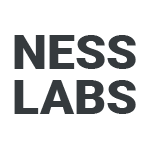
I’ve watched good ideas die in conference rooms not because they were wrong, but because they were presented badly.
For instance, two executives present the same cost-cutting proposal. One gets immediate buy-in. The other faces twenty minutes of skeptical questions. The data was identical. So what made the difference?
The difference was how they used ethos, pathos, and logos.
Aristotle identified this triad over two thousand years ago, and it still explains why some messages stick while others don’t. You need all three: credibility that makes people trust you, emotion that makes them care, and logic that makes your argument hold up.
Miss one and your message loses power. Miss two and you might as well be talking to yourself.
This matters because poor communication doesn’t just mean people tune you out. It means losing the promotion to someone less qualified who knows how to tell their story. It means watching your idea get dismissed while a weaker version gets funded three months later. It means hurting relationships because people misread your intentions.
So, how can you effectively get through to people?
Most people think persuasion is about having the best argument. But facts alone don’t convince anyone of anything – and if you’ve ever lost an argument you should have won, you already know this. Instead, focus on these three pillars:
1. Ethos: Build credibility beyond credentials. Job titles help, but they’re not enough. Share concrete achievements and show you’ve actually done the work instead of relying on your position. “I reduced our churn rate by 40% by redesigning the onboarding flow” establishes more trust than “I’m a Senior Product Designer.”
You can also build credibility through connection. Researchers demonstrated this by comparing two versions of the same message. Here’s the first version: “While burnout continues to plague residents, medical educators have yet to identify the root causes of this problem.”
The second created connection by changing just two words: “While burnout continues to plague our residents, we as medical educators have yet to identify the root causes of this problem.”
Same content, but the shift from “residents” to “our residents” and from “medical educators” to “we” transforms the speaker from an outside observer into someone invested in solving the problem, which makes the audience more likely to trust the message.
2. Pathos: Use emotion strategically. When Martin Luther King Jr. acknowledged “some of you have come here out of great trials and tribulations. Some of you have come fresh from narrow jail cells,” he wasn’t being dramatic. He was recognizing real suffering so he could inspire action. The emotion served the argument.
You don’t need to go overboard with this. Just pick one emotion you want to evoke, identify where it matters most in your message, and bring it to life through specific details. For instance, don’t just say “10% of our users have a reading impairment”, add an example like: “A user emailed last week saying they tried to navigate our app with a screen reader for two hours before giving up.”
Be careful though: pathos fails when it’s forced or disconnected from your argument. So use it sparingly, only where it strengthens your point.
3. Logos: Make your logic feel inevitable. Peter Gould said “Data can never speak for themselves.” You want to structure your reasoning so each step follows naturally from the last, making people think that they’re arriving at your conclusion themselves.
This is the part I suspect most readers of this newsletter are already comfortable with, so make sure to not just rely on logos, and instead try to always balance all three elements: ethos focuses on you as the speaker, pathos on your audience, and logos on the message itself.
Lean too hard on logic and you might sound cold. Lean too hard on emotion and you might seem manipulative. Lead only with credentials and you might come across as arrogant.
What’s amazing is that all three amplify each other. When you establish credibility, people are more receptive to your emotional appeals. When you connect emotionally, they’re more willing to follow your logic. When your reasoning holds up, your credibility seems stronger.
So next time you need to persuade someone, don’t just ask “Is my reasoning sound?” – conduct a persuasion audit by asking three questions: Do they trust me? Do they feel something? Does my logic hold up? When you can answer yes to all three, your message will actually land.
Tiny Experiment of the Week
Ready to put those ideas into practice? This week’s tiny experiment is designed to help you use ethos, pathos, and logos.
I will [conduct a persuasion audit before sending important messages] for [3 weeks]
To make it easier, choose messages you already need to send and read them out loud before sending them. This experiment will show you how small adjustments can make a big difference in how people respond. Want to dig deeper? Get your copy of Tiny Experiments.
Until next week, stay curious!
Anne-Laure.
